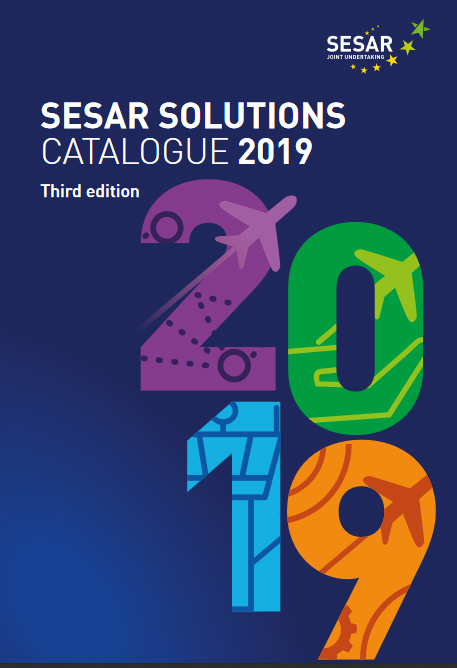In 2019, the first wave of SESAR 2020 industrial research programme came to a close, delivering a number of solutions (as part of Release 9) to the necessary level of maturity to make them available for pre-industrialisation (Technology readiness level 6 or V3).
| Trajectory based Integrated Runway (SJU reference: PJ.02-08) | |
| Enhanced visual operations (SJU reference: PJ.03a-04) | |
| Traffic alerts for pilots for airport operations (SJU reference: PJ.03b-05) | |
| Enhanced rotorcraft operations in the TMA (SJU reference: PJ.01-06) | |
| Optimised traffic management to enable free routing in high complexity and very high complexity environments (SJU reference: PJ.06-01) | |
| High productivity controller team organisation in en-route (including e-TMA) (SJU reference: PJ.10-01a1) | |
| Integrated tactical and medium conflict detection & resolution (CD&R) services and conformance Monitoring tools for en-route and TMA, formerly known as improved performance in the provision of separation (SJU reference: PJ.10-02a1) | |
| Enhanced airborne collision avoidance for commercial air transport normal operations - ACAS Xa European acceptability framework (SJU reference: PJ.11-A1) | |
| AeroMACs integrated with ATN, digital voice and multilink (SJU reference: PJ.14-02-06) | |
| RNP1 reversion based on DME-DME, formerly known as alternative position, navigation and timing (A-PNT) (SJU reference: PJ.14-03-04) | |
| Sub-regional demand capacity balancing common service (SJU reference: PJ.15-01) | |
| E-AMAN (delay sharing) common service (SJU reference: PJ.15-02) | |
| Aeronautical data common service, formerly known as static aeronautical data common service (SJU reference: PJ.15-10) | |
| Aeronautical digital map common service (SJU reference: PJ.15-11) | |
| Enabling rationalisation of infrastructure using virtual centre based technology, formerly known as work station, service interface definition and virtual centre (SJU reference: PJ.16-03) | |
| Multi touch input (MTI) (SJU reference: PJ.16-04-01) | |
| EFPL supporting SBT transition to RBT (SJU reference: PJ.18-02c) | |
| Reactive flight delay criticality indicator (FDCI) as part of AU processes for trajectory definition (SJU reference: PJ.07-01-01) | |
| Enhanced computer-assisted slot allocation (ECASA) (SJU reference: PJ.09-03-01) and AOP/NOP departure information integrated in eFPL (SJU reference: PJ.09-03-02) in support of collaborative network management |
The closure of the first wave of activities has resulted in a prioritisation of the remaining candidate solutions, focusing on those that will bring the expected benefits and that will reach V3 maturity by the end of the SESAR 2020 programme. This means that work has discontinued on a number of solutions.
At the same time, a total of 15 projects (12 focusing on industrial research and three very large-scale demonstrations) will continue work in the second wave of the programme with a view to delivering a further 50 solutions.

 The third edition of the SESAR Solution Catalogue provides a holistic view of the status of SESAR R&D in 2019 and offering solutions to some of the pressing challenges facing European aviation today. The publication covers the results of the first R&D programme (SESAR 1); more than 60 solutions, many of which are in the process of deployment at local and European levels. It also presents details of the ongoing R&D (candidate solutions) as we reach midway in the current programme, SESAR 2020. Finally, the catalogue gives a flavour of some of the promising results coming out of the SESAR’s dedicated exploratory research programme.
The third edition of the SESAR Solution Catalogue provides a holistic view of the status of SESAR R&D in 2019 and offering solutions to some of the pressing challenges facing European aviation today. The publication covers the results of the first R&D programme (SESAR 1); more than 60 solutions, many of which are in the process of deployment at local and European levels. It also presents details of the ongoing R&D (candidate solutions) as we reach midway in the current programme, SESAR 2020. Finally, the catalogue gives a flavour of some of the promising results coming out of the SESAR’s dedicated exploratory research programme.